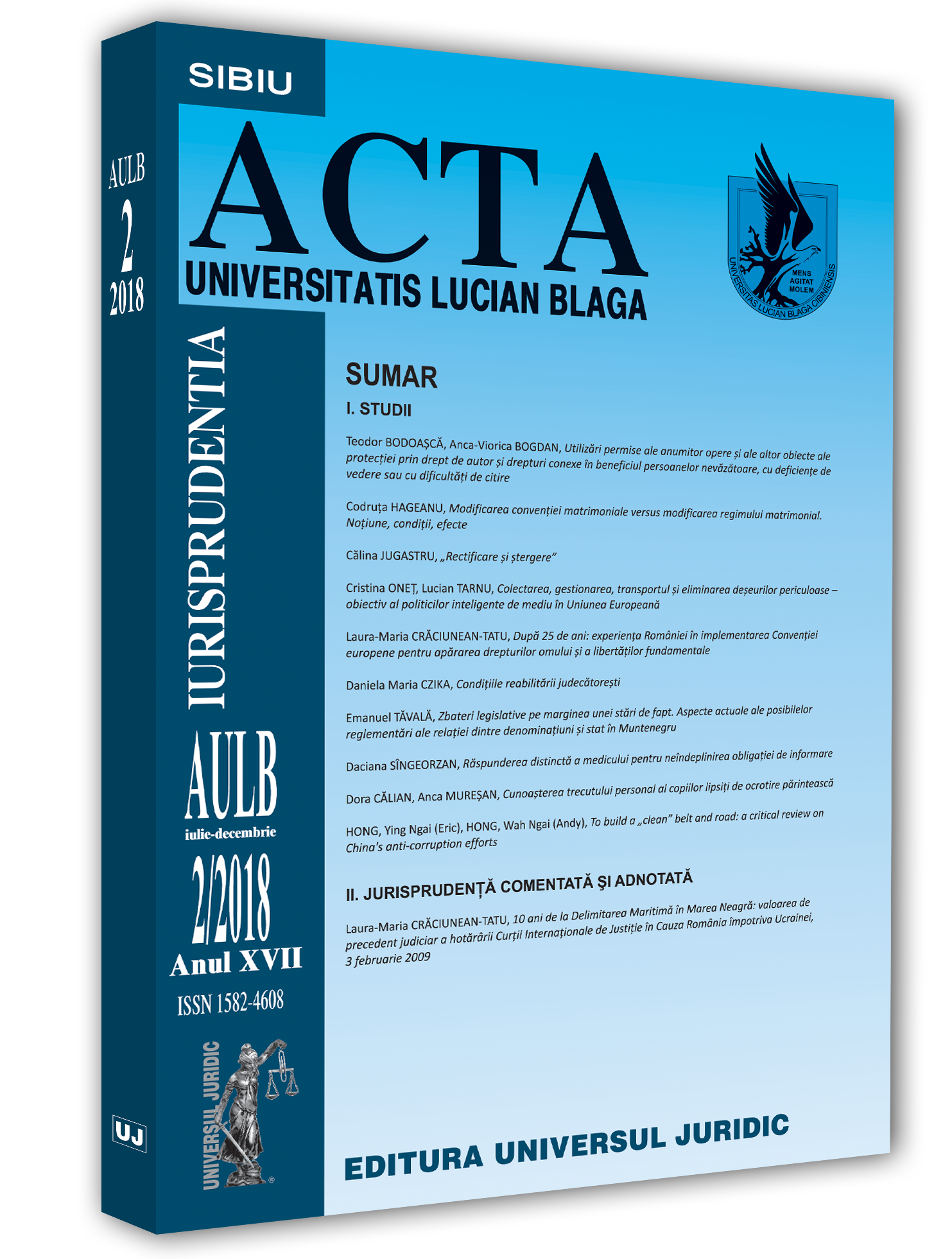Utilizări permise ale anumitor opere şi ale altor obiecte ale protecţiei prin drept de autor şi drepturi conexe în beneficiul persoanelor nevăzătoare, cu deficienţe de vedere sau cu dificultăţi de citire
Permitted Uses of Certain Works or Objects Protected by Copyright and Associated Rights for the Benefit of Blind, Visually Impaired or Reading Impaired
Author(s): Teodor Bodoasca, Anca-Viorica BogdanSubject(s): Law, Constitution, Jurisprudence, Civil Law
Published by: Universul Juridic
Keywords: beneficiary person; work and other subject matter; accessible format copy; authorised entity; rights and obligations;
Summary/Abstract: Law no. 8/1996 on copyright and related rights was recently amended and supplemented by the Law no. 15/2019. This legislative event was determined by the necessity to transpose in the Romanian legislation the provisions of the Directive (EU) 2017/1564 of the European Parliament and of the Council of 13 September 2017 on certain permitted uses of certain works and other subject matter protected by copyright and related rights for the benefit of persons who are blind, visually impaired or otherwise print-disabledand amending Directive 2001/29/EC on the harmonisation of certain aspects of copyright and related rights in the information society. In essence, in Law no. 8/1996, were introducedart. 351 and art. 352, which regulates the conditions under which the reproduction, communication to the public, making available to the public, broadcasting and lending of a work or other subject matter for the benefit of persons who are blind, visually impaired or otherwise print-disabled, is permitted without the consent of the rightholder of any copyright or related rightand without payment. The other amendments and additions to the Law no. 8/1996 only serve to adjust some provisions of this law to the new rules introduced by art. 351 şi art. 352. In this situation also, the Romanian legislator made a „mot a mot transposition” of the provisions of the European legislation, without being concerned about their compatibility with other internal regulations regardingthe legal protection of intellectual creation. Inevitably, such a manner of transposition generates misunderstandings between the various provisions of the Law no. 8/1996 and even between the provisions of this law and other domestic laws, which generates sources for various doctrinal and jurisprudential interpretations. This study, makes both the analysis of the new regulations and the argumentation of some de lege ferendaproposals in order to remove some controversial legal issues related to the new legal provisions.
Journal: Acta Universitatis Lucian Blaga. Iurisprudentia
- Issue Year: 2018
- Issue No: 02
- Page Range: 13-24
- Page Count: 12
- Language: Romanian
- Content File-PDF

